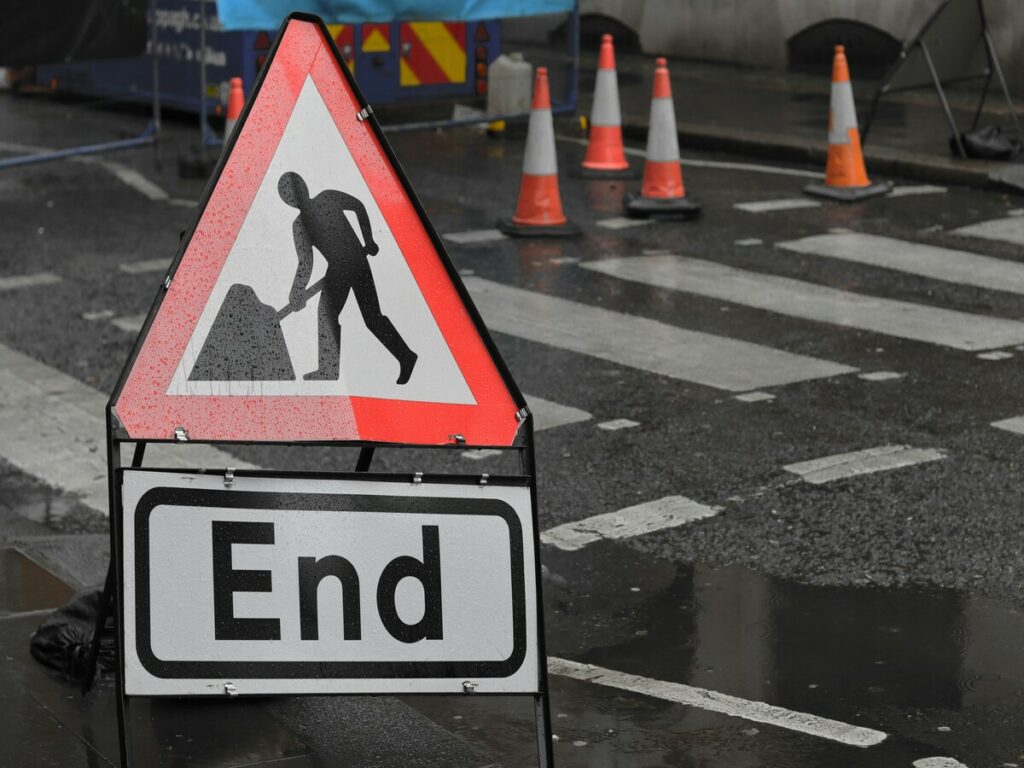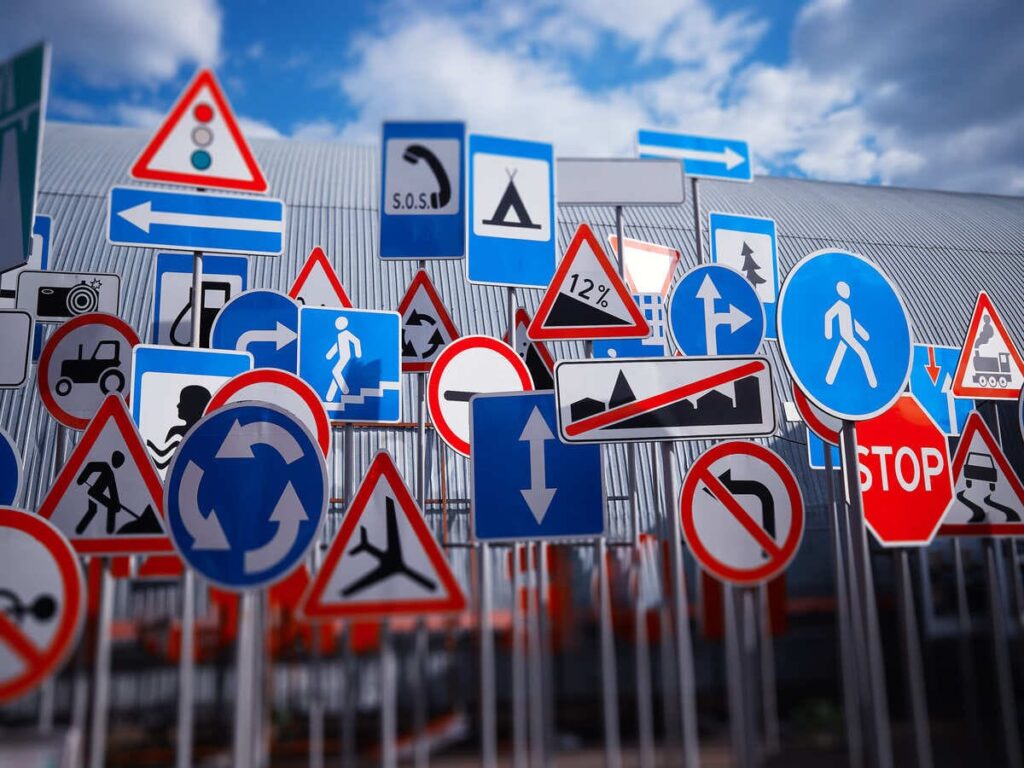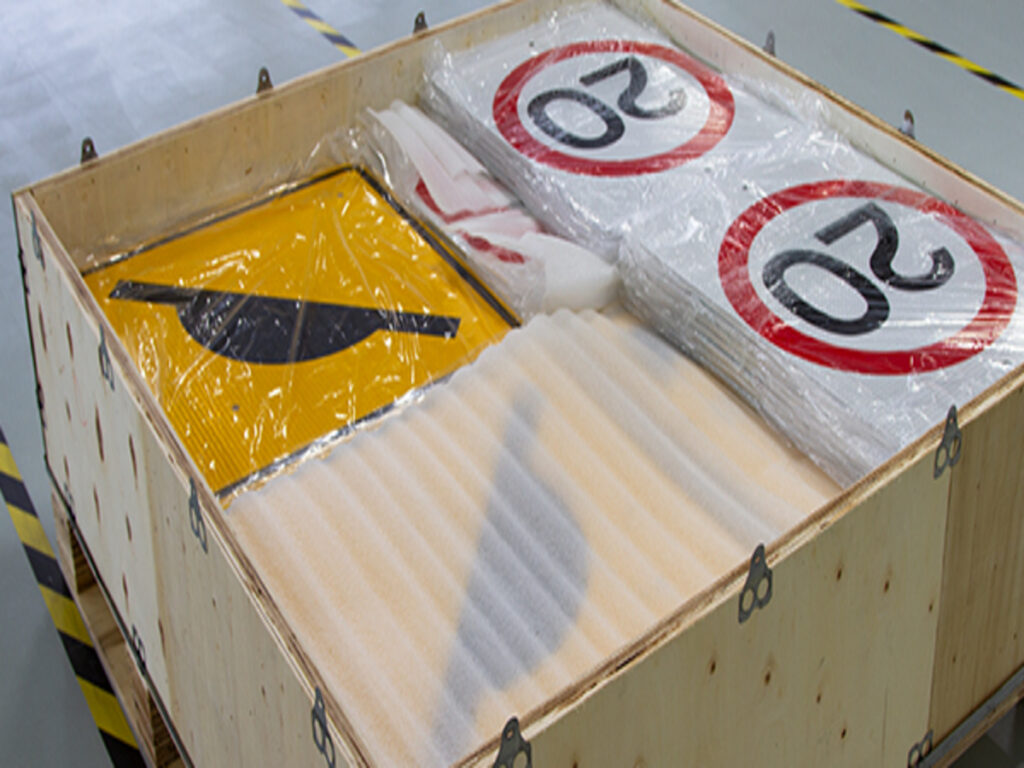
マイクロドットテクノロジーは、ほとんどのシナリオで交通安全コーンに最も強力な費用対効果を提供します. 慎重な識別を提供します, 回復をサポートします, 厳しい予算に適合します. 高価値または重要な領域の場合, GPSトラッキングはリアルタイムの監視を追加し、盗難防止を強化します. セキュリティ染料は目に見える抑止力を低コストで提供します. 交通コーンを盗むリスクに対処することにより, 各組織は、特定のトラフィックコントロールソリューションと運用上のニーズに合わせて調整された最も効果的な盗難防止機能を実装できます.
キーテイクアウト
- 交通コーンは持ち運びが簡単で無防備なままになるため、しばしば盗まれます, これにより、組織の安全リスクと追加コストが作成されます.
- マイクロドットテクノロジーは低コストを提供します, 所有権を証明し、盗まれたアイテムを回復するのに役立つユニークなコードでコーンをマークする控えめな方法.
- GPSトラッキングは、リアルタイムの場所の更新とアラートを提供します, リスクの高いエリアに最適ですが、前払いと継続的なコストが高くなっています.
- セキュリティ染料は、泥棒をマークし、盗まれたコーンを見つけやすくすることにより、目に見える抑止力として機能します, 手頃な価格で永続的なソリューションを提供します.
- マイクロドットを組み合わせます, 染料のマーキング, そして、GPSトラッキングは強力になります, 盗難を減らす層状保護, 交換コストを削減します, 交通安全を向上させます.
コーンの窃盗と破壊行為
コーンの盗難とは何ですか?
多くの場合、交通コーンは盗難のターゲットになります 彼らは軽量だからです, ポータブル, そして無防備なままにしました. 多くの人々は、ほとんどの州でトラフィックコーンを摂取または盗むことが違法であることを認識していません. この法律は、罰金や刑事告発をもたらす可能性があります. 交通コーンは公式の交通管制装置として機能します 交通安全に重要な役割を果たす. コーンの不正な除去は、ドライバーと歩行者の両方に危険をもたらします.
- 交通コーンは独特で認識しやすいです.
- それらの反射表面は、視認性の向上を提供します, 特に夜に.
- 学生はいたずらのためにコーンを盗むと信じています, しかし、このステレオタイプは常に真実ではありません.
- コーンの盗難の問題は、彼らの物理的な特徴と社会的認識の両方にリンクしています.
交通管理にとって重要な理由
効果的な交通管理は、トラフィックコーンの適切な配置とメンテナンスに依存します. これらのコーンは、一時的なロードワークゾーンや事故サイトを通じて車両と歩行者を安全に導くのに役立ちます. 誰かがコーンを削除または損傷するとき, それは交通の安全性を混乱させ、事故のリスクを高めます.
反射面と視認性の向上を伴う交通コーンは労働者を保護します, ドライバー, と歩行者. それらの不在は、混乱と危険な状態につながる可能性があります. 交通安全は、これらのコーンの存在に依存して、危険と直接交通流をマークします.
紛失または破損した交通コーンのコスト
紛失または破損した交通コーンは、組織に追加費用を作成します. 盗難により交換コストが上昇します, 厳しい天気, および不適切な取り扱い. 破損したコーンも無駄を増やし、より頻繁に購入する必要があります.
適切な保管, 定期的な検査, チームトレーニングはこれらの損失を減らすのに役立ちます. 在庫監査は、収縮と非効率性を特定することができます, コストの削減. 保有費用, 倉庫や保険など, 経済的負担に加えます. 新しいコーンを注文し、ストックアウトを処理することにより、さらに影響を与える予算.
組織は、FIFO在庫のローテーションや損傷したコーンのリサイクルなどの戦略を使用して、廃棄物と制御の交換コストを削減できます. これらの手順は、交通安全と金融効率の両方をサポートしています.
交通コーンの盗難防止ソリューション
GPS追跡
GPSトラッキングは、トラフィックコーン内または上に配置された小さなデバイスを使用します. これらのデバイスは、リアルタイムの位置データを中央システムに送信します. チームはデジタルマップ上の各円錐の動きを監視できます. 誰かがセットエリアの外に円錐を動かした場合, システムはアラートを送信します. このテクノロジーは、盗まれたコーンを迅速に回復するのに役立ちます. コーンを追跡できることを人々が知っているので、それは盗難を思いとどまらせます. 多くの組織は、高リスクまたは価値のある場所でスマートトラフィックコーンのGPSトラッキングを使用しています. このソリューションは、安全性と資産管理の改善をサポートします.
マイクロドット
マイクロドットテクノロジー 各円錐を何千もの小さなドットでマークします. 各ドットには、所有者にリンクされた一意のコードが含まれています. 法執行機関はドットをスキャンして盗まれたコーンを識別できます. マイクロドットは肉眼ではほとんど見えません, それらを削除するのを難しくします. この方法は、組織が所有権を証明し、失われたアイテムを回復するのに役立ちます. マイクロドットは、多数のコーンを保護するための費用対効果の高い方法を提供します. 彼らは控えめだが強力な安全ソリューションを望んでいる企業にとってはうまく機能します.
セキュリティ染料
セキュリティ染料は、交通コーンの表面に適用される特別なマーキングまたは色を使用します. これらの染料は、コーンを盗んだり改ざんしようとしたりする人の手や衣服を染めます. 目に見えるマークにより、盗まれたコーンを簡単に見つけて盗難を抑止できます. セキュリティ染料は、ユニークな色やパターンが際立っているため、回復にも役立ちます. この方法は視認性の向上を提供し、強力な警告として機能します. 多くのチームは、迅速にセキュリティ染料を選択します, 低コスト保護.
ヒント: これらの盗難防止ソリューションを組み合わせることで、層状の保護を提供し、安全ソリューションの有効性を最大化できます.
トラフィックコーンのGPSトラッキング
GPSの仕組み
GPSトラッキングは、トラフィックコーンの内側または接続された小さな電子デバイスを使用します. これらのデバイスは衛星と通信して、各円錐の正確な位置を決定します. システムは、リアルタイムの位置データを中央ダッシュボードに送信します. チームはデジタルマップですべての円錐の位置を表示できます. コーンが指定された領域の外を移動する場合, システムはアラートを送信します. このテクノロジーは、組織が資産を監視し、不正な動きに迅速に対応するのに役立ちます.
リアルタイム追跡の利点
リアルタイムGPSトラッキングは、トラフィック管理チームにいくつかの利点を提供します:
- チームは、各コーンの即時のロケーションアップデートを受け取ります.
- ジオフェンシングアラート円錐が安全ゾーンを離れるかどうかスタッフに通知する.
- リアルタイムのデータは、盗まれたコーンの回復をより速くサポートします.
- 絶え間ない監視により、追加のセキュリティ担当者が必要になります.
- 正確な追跡により、資産の利用とメンテナンスのスケジューリングが向上します.
- GPSデータは、マネージャーがトラフィックパターンを分析し、コーン配置を最適化するのに役立ちます.
注記: リアルタイム追跡は盗難を防ぐだけでなく、日常業務を合理化し、失われた機器に関連するコストを削減します.
GPSコスト
GPS追跡システムのコストは、機能と構成によって異なります. 基本的なGPSトラッカーの費用 $75 ユニットごと. センサーまたはカメラを備えた高度なモデルに到達できます $300 それ以上. サブスクリプションプランは毎月または毎年利用できます. 追加機能, 補助センサーなど, 機器とサブスクリプションコストの両方を増やします. バッテリー寿命は範囲です 1 に 12 年, 使用法に応じて. パワーオプションには、バッテリーまたは電源への直接接続が含まれます. インストールは、スタッフまたは専門家が行うことができます.
| 側面 | 詳細 |
|---|---|
| 基本的なGPSトラッカーコスト | 〜ユニットあたり75ドル |
| 高度なGPSトラッカーコスト | まで $300+ (センサー/カメラ付き) |
| サブスクリプションプラン | 毎月または年次 |
| バッテリー寿命 | 1–12年 |
| インストール | 自己または専門家 |
ケーススタディ: 盗難の削減
都市交通管理チームが高リスクエリアのコーンにGPSトラッカーを設置しました. 実装後, 盗難事件は終わりました 60%. スタッフは、コーンが予期せず動いたときにインスタントアラートを受け取りました. チームは数時間以内にいくつかの盗まれたコーンを回収しました. また、システムは在庫制御を改善し、交換コストを削減しました. マネージャーは、緊急時の資産の可視性と応答時間の速度が向上したと報告しました. GPS追跡は、セキュリティと運用効率の両方にとって貴重な投資であることが証明されました.
マイクロドットテクノロジー
マイクロドットとは何ですか?
マイクロドットは小さな識別タグです, 多くの場合、砂粒よりも小さい. メーカーは、各トラフィックコーンを所有者にリンクする一意のコードをこれらのマイクロドットに埋め込みました. 各コードは安全なデータベースに登録されています. 法執行機関と回復チームは、これらのコードを読むために特別なスキャナーを使用します. マイクロドットは肉眼ではほとんど見えません, 泥棒が検出または削除を困難にします. このテクノロジーは、トラフィックコーンをマークして保護するための控えめな方法を提供します.
マーキングと追跡
チームは、透明な接着剤またはスプレーを使用して、トラフィックコーンにマイクロドットを適用します. このプロセスは、わずか数分でコーンを何千ものマイクロドットでカバーします. 各マイクロドットには、一意の識別番号が含まれています. 誰かが紛失または盗まれた円錐を見つけたとき, 当局は表面をスキャンして、コードを正当な所有者に一致させることができます. このシステムは、組織が資産を追跡し、盗難や損失の場合に所有権を証明するのに役立ちます.
ヒント: マイクロドットマーキングは、組織が各コードを国または地域のデータベースに登録するときに最適に機能します. このステップは、回復の可能性を高めます.
マイクロドットの利点
マイクロドットテクノロジーは、トラフィックコーンセキュリティにいくつかの利点を提供します:
- コーンの外観を変えない控えめな識別
- 泥棒が検出または削除するのが難しい
- 迅速な回復と所有権の証明をサポートします
- 大量に簡単に適用できます
- 既存の在庫システムで動作します
マイクロドットは、組織が盗難を減らし、資産管理を改善するのに役立ちます. 彼らはまた、盗まれた財産を返還するための法執行の努力をサポートしています.
費用対効果
マイクロドットシステムは、トラフィックコーン保護に強力な費用対効果を提供します. 初期投資は他の盗難防止解決策と比較して低いままです. アプリケーションに時間がかかり、一度に多くのコーンを覆う. 組織は交換コストを削減し、回復率を改善することでお金を節約します. マイクロドットは、大きな在庫を管理し、信頼できる盗難防止を必要とするチームに実用的なソリューションを提供します.
染料のマーキング
染料マーキングの仕組み
染料マーキングは、交通コーンの表面に直接塗布された特別なインクまたは顔料を使用します. これらの染料は、通常の照明の下で際立っている目に見えるマークを作成します. 一部の染料は、紫外線にも反応します, それらをさらに簡単に見つけることができます. チームは、製造中またはメンテナンスルーチンの一部として染料を適用できます. プロセスには数分しかかかりませんが、特別な機器は必要ありません. 染料はコーン材料と結合します, したがって、それは衰退と洗濯に抵抗します.
注記: 染料のマーキングは、強力な視覚的抑止力として機能します. 泥棒は、コーンが追跡可能であることを知っているため、明らかなマーキングでコーンを避けることがよくあります.
回復支援
染料のマーキングは、組織が盗まれたコーンを回収するのに役立ちます. ユニークな色やパターンにより、各コーンは簡単に識別できます. 法執行官は、マークされたコーンをすばやく見つけることができます, 遠くからでも. 回復チームは紫外線を使用して隠された染料のマークを明らかにします. この機能は、所有権を証明するのに役立ち、返品プロセスをスピードアップします. 多くの企業は、データベースに染料パターンを登録しています, 迅速な検証をサポートします.
- マークされたコーンは公共の場で際立っています.
- 回復チームは、染料のパターンを特定の組織に一致させることができます.
- 染料のマークは、天候にさらされた後でも見えるようになります.
長期的な有効性
染料のマーキングは、交通安全コーンの永続的な保護を提供します. 染料は雨に抵抗します, 日光, そして擦り傷. ほとんどの製品は、再適用を必要とせずに数年間続きます. 染料マーキングを使用する組織は、時間の経過とともに盗難事故が少ないと報告しています. 目に見えるマークは盗難を思いとどまらせ、再販を困難にします. 染料のマーキングは、都市部と農村の両方の環境でうまく機能します.
| 特徴 | 利点 |
|---|---|
| UV反応性 | 簡単な識別 |
| 耐候性 | 長期にわたる保護 |
| カスタムパターン | 所有権をサポートします |
コスト分析
染料マーキングは、コーンセキュリティのための低コストのソリューションを提供します. 初期投資は、染料と用途ツールを対象としています. ほとんどの組織は、いくつかの盗まれたユニットを交換するためのコストよりも少ない数百のコーンをマークできます. 染料が何年も続くため、メンテナンスコストは低いままです. チームは盗難を減らし、頻繁な交換を避けることでお金を節約します.
ヒント: 染料のマーキングは、在庫や予算が限られている組織に強い価値をもたらします. 手頃な価格と効果的な盗難防止を組み合わせています.
費用便益分析
ソリューションコストと比較. 交換
組織は、盗難防止ソリューションへの投資と盗まれた交通コーンの交換の選択に直面しています. 各オプションには、直接および間接コストが搭載されています. 標準コーンの価格は範囲です $15 に $40, トラフィックコーンの材料とサイズに応じて. 反射面を備えた高品質のコーンはより多くのコストがかかりますが、視界と耐久性の向上を提供します.
盗難防止ソリューションは、さまざまな価格帯を示しています:
| 解決 | コーンあたりの前のコスト | 継続的なコスト | 耐久性 | 視認性の影響 |
|---|---|---|---|---|
| GPS追跡 | $75 - 300ドル | サブスクリプション | 高い | なし |
| マイクロドット | $2 - 5ドル | なし | 高い | なし |
| 染料のマーキング | <$2 | 最小限 | 高い | 見える |
注記: マイクロドットと染料マーキングは、大規模な在庫に強力な費用対効果をもたらします. GPS追跡は、価値の高い場所または重要な場所に適しています.
チームが頻繁に安全コーンを交換するとき, コストはすぐに増加します. 盗難防止ソリューションは、損失を防ぎ、回復をサポートすることにより、これらの費用を削減します.
コーンの盗難の本当のコスト
The コーンの盗難の本当のコスト コーン自体の価格を超えています. 失われたコーンは、交通安全のギャップを作成します. コーンの欠落は、道路上の反射面を減らします, 混乱につながり、事故のリスクを高める可能性があります. チームは盗まれたコーンを交換するために時間とリソースを費やす必要があります, 操作を混乱させます.
間接コストには含まれます:
- コーンの欠落による事故のリスクの増加
- ロードワークまたはイベント管理の遅延
- より高い保険料
- 交通安全対策に対する国民の信頼を削減しました
交通の安全性は、コーンの一貫した存在に依存します. 盗難は事故の軽減の努力を損ない、労働者と運転手を危険にさらす.
長期的な価値
盗難防止ソリューションへの投資は、組織に長期的な価値を提供します. マイクロドットと染料のマーキングにはわずかな前払い投資が必要ですが、何年もコーンを保護する必要があります. GPSトラッキングは、リアルタイムの監視と迅速な回復を可能にすることにより、リスクの高いエリアの安全性を向上させます.
耐久性のあるトラフィックコーン材料と反射表面は、各円錐の寿命を延ばします. 盗難防止ソリューションは、これらの機能を維持するのに役立ちます, 交通安全と可視性の向上をサポートします. 時間とともに, 組織は、交換率を下げ、混乱を最小限に抑えることでお金を節約します.
重要な利点は含まれます:
- 紛失または盗まれたコーンが少なくなります
- 交換費用と人件費の削減
- 労働者と一般の人々の安全性が向上しました
- 交通安全規制への強力なコンプライアンス
ROIのケーススタディ
忙しい高速道路に沿って、地域の道路保守会社が頻繁に円錐形の盗難に直面しました. チームは、すべての交通安全コーンにマイクロドットを適用し、染料マーキングを使用して抑止力を高めることにしました. 来年, 盗難事件が立ち寄った 70%. 会社は救いました $10,000 交換費用. 労働者は、コーンラインのギャップが少ないと報告しました, 乗組員とドライバーの両方の安全性が向上しました.
同社はまた、作業ゾーンの近くで事故料金の引き下げに気づいた. 反射面と盗難防止マークを備えたコーンの存在は、交通安全と事故の減少をサポートしました. 盗難防止ソリューションへの投資は、6か月以内にそれ自体に支払われました.
交通安全を優先し、階層化された保護に投資する組織は、測定可能なリターンを参照してください. 盗難防止ソリューションは資産を保護します, コストを削減します, 安全性の改善をサポートします.
ソリューションの組み合わせ
統合戦略
多くの組織は、強力な保護のために盗難防止技術を組み合わせることを選択します. チームは、慎重な識別のためにマイクロドットでコーンをマークすることから始めることがよくあります. 次に、染料マーキングを追加して目に見える抑止力を作成します. 高リスクゾーンで, マネージャーは、選択したコーンにGPSトラッカーをインストールします. このアプローチにより、チームは適切なテクノロジーを各場所に一致させることができます. 例えば, 都市は、忙しい交差点とストレージヤードのマイクロドットの近くでGPSトラッキングを使用する場合があります. 方法を混合します, 組織は、さまざまな種類の盗難と破壊行為に対処できます.
ヒント: どの盗難防止ツールを組み合わせるかを選択する前に、リスクの高い領域をマップします. このステップは、チームがリソースを賢く使用するのに役立ちます.
セキュリティの階層化
階層化されたセキュリティアプローチは、複数のテクノロジーを使用して交通安全コーンを保護します. 各層は、泥棒のための新しい障壁を追加します. マイクロドットは、盗まれた安全コーンを販売するのを難しくします. 染料のマーキングにより、盗まれたコーンが簡単に見つけることができます. GPSトラッキングは、チームがコーンを迅速に回復するのに役立ちます. 結合したとき, これらのレイヤーは盗難を魅力的ではなく、犯罪者にとってよりリスクが高くします.
| セキュリティレイヤー | 主な利点 |
|---|---|
| マイクロドット | 慎重な識別 |
| 染料のマーキング | 目に見える抑止 |
| GPS追跡 | リアルタイムの回復サポート |
階層化されたセキュリティを使用するチームは、盗難事件が少ないと報告しています. 彼らはまた、より多くの盗まれたコーンを回収します.
ベストプラクティス
成功した組織は、盗難防止ソリューションを組み合わせる際にベストプラクティスに従います:
- 各テクノロジーを適用および維持するためのスタッフを訓練します.
- 安全なデータベースにマイクロドットコードと染料パターンを登録する.
- GPS追跡コーンのアラートを設定します.
- 盗難データを定期的に確認して、戦略を調整します.
- 回復手順について地元の法執行機関と通信します.
注記: 定期的な監査は、チームが保護のギャップを見つけ、盗難防止計画を改善するのに役立ちます.
ソリューションを組み合わせると、コーンの盗難と破壊行為に対する強力な防御が生まれます. この戦略は資産を保護し、より安全な道路をサポートします.
実装の課題
初期対. 継続的な費用
組織は、コーンの盗難防止ソリューションを選択する際に、多くの場合、初期投資に焦点を当てています. GPS追跡, マイクロドット, 染料のマーキングには、それぞれ異なる前払いコストがあります. チームは継続的な費用も考慮する必要があります. GPS追跡のサブスクリプション料金は時間とともに増加します. マイクロドットと染料マーキングシステムは、より少ないメンテナンスが必要です, しかし、チームは大量に使用した後にマーキングを再適用する必要があるかもしれません. 明確な予算計画は、チームの初期コストと継続的なコストのバランスを取るのに役立ちます. この計画は、コーンが一年中保護されたままであることを保証することにより、交通の安全をサポートします.
メンテナンスと維持
定期的なメンテナンスは、盗難防止システムを効果的に保ちます. チームは、摩耗したマーキングまたは破損したデバイスの交通安全コーンを検査する必要があります. マイクロドットと染料のマーキングは何年も続きます, しかし、厳しい天気はそれらを消える可能性があります. GPSトラッカーには、バッテリーチェックとソフトウェアの更新が必要です. メンテナンススケジュールは、チームが保護のギャップを回避するのに役立ちます. 信頼できる維持費は、反射面が目に見えるようにし、交通安全基準が高いことを保証します.
抵抗を克服します
一部のスタッフは、新しい盗難防止対策に抵抗する場合があります. 彼らは余分な作業やルーチンの変更を心配するかもしれません. マネージャーは、トレーニングと明確なコミュニケーションでこれらの懸念に対処できます. これらのソリューションがトラフィックの安全性を改善し、ワークロードを減らす方法を示すことは、サポートを得るのに役立ちます. 他のチームからサクセスストーリーを共有することも信頼を築くことができます. 誰もが利益を理解しているとき, 採用率は上昇し、交通安全が向上します.
誤検知
盗難防止システムは、誤報を引き起こすことがあります. 例えば, GPSトラッカーは、定期的なメンテナンス中にコーンが移動する場合、アラートを送信する場合があります. 染料のマーキングは、破壊行為と間違われる可能性があります. チームは、アラートを処理するために明確なプロトコルを設定する必要があります. トレーニングは、スタッフが迅速かつ正確に対応するのに役立ちます. 誤検知を減らすことは、実際の脅威に焦点を合わせ、効果的な交通安全管理をサポートします. 一貫した手順は、反射面の可視性を維持し、安全な道路状況を確保するのに役立ちます.
マイクロドットと染料のマーキングは、ほとんどの組織に強い価値をもたらします. これらのオプションは資産を保護し、コストを抑えます. GPSトラッキングは、高リスクまたは重要なサイトに最適です. 各チームはそのニーズを確認し、その予算とリスクレベルに一致する交通制御ソリューションを選択する必要があります. 慎重な計画は、チームが労働者を保護し、道路を安全に保つのに役立ちます.
よくある質問
交通コーンの数が盗まれます?
毎年盗まれた交通コーンの正確な数は追跡が困難ですが, 毎年数千人が摂取されると推定されています, 特に都市部で. 盗難の理由は異なります, 一部の個人がコーンをいたずらとして服用しています, 個人的な使用のため, または再販するためにさえ. この盗難は、公共の安全に大きな影響を与える可能性があります, 盗まれたコーンが道路や建設現場を保護されていないことが多いため, 潜在的な危険につながります.
GPS追跡はすべての気象条件で機能します?
GPSトラッカーは雨の中で確実に機能します, 雪, そして極端な温度. ほとんどのデバイスは、耐候性のケーシングを使用しています. チームは、定期的なメンテナンス中にバッテリー寿命と信号強度を確認する必要があります.
労働者と環境にとって安全なセキュリティ染料です?
メーカーは、セキュリティ染料を非毒性で環境に優しいものに設計する. 染料は、申請や取り扱い中に労働者に害を及ぼさない. 製品に提供される安全指示に常に従ってください.
大規模な在庫に最適な盗難防止ソリューションは何ですか?
マイクロドットと染料のマーキングは、大規模な在庫に最適な価値を提供します. これらのソリューションは、コーンあたりの低コストで強力な保護を提供します. チームは、数百のユニットに両方をすばやく適用できます.
チームは、盗難防止ソリューションでマークされた盗まれたコーンをどのように回収できますか?
チームは盗まれたコーンを地方自治体に報告します. 法執行機関は、マイクロドットスキャナーまたは染料のマーキングのチェックを使用して所有権を確認します. GPSトラッキングにより、チームはコーンをリアルタイムで見つけて取得できます.



















